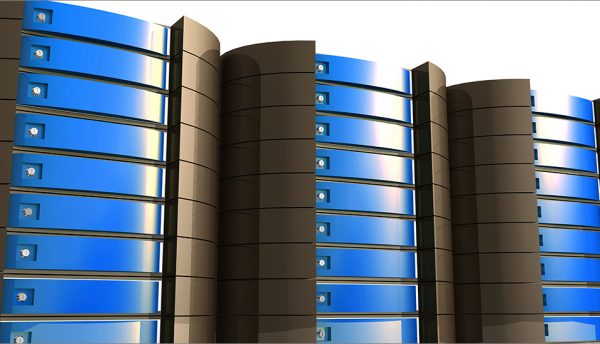In today’s world of digital disruption, every business perceives itself as being under threat, and, as a result, most are making a conscious decision to choose speed over cost. This is manifesting in some interesting behaviour shifts by enterprise IT leaders.
Speed trumps cost
In 2018, we will see them moving away from conducting lengthy, in-depth total cost of ownership analyses when making decisions about which technology to invest in, and instead choosing the technology or platform that they can leverage the fastest. And, in their quest to deliver the speed that the business needs to drive digital transformation, IT leaders will intensify their efforts to identify and eliminate the inhibitors of speed.
Increasingly, organisations will recognise the extent to which they depend on their networks to keep up with the speed of the cloud, and look for ways to ensure that their networks can perform at the same pace as their compute and storage environments. In the year ahead, we will also see more businesses exploiting software-defined networking and network virtualisation across the network in the datacentre, hybrid WAN, and the campus as part of their efforts to transform their networks.
In 2018, it will be important for organisations to identify the technologies and platforms that will deliver the business outcome they need, at the required speed. For example, instead of continuing to implement multiple tiers of legacy storage devices, some will conclude that they can move faster by only using flash storage.
Many will look to invest in hyper-converged technologies in their on-premise infrastructure, as these may provide more agility and speed than the cloud. Organisations will need to make important decisions about the application models that they are going to use, and select the most appropriate infrastructure to support them. Deciding on the right workload placement strategy will also be key.
Of course, all of these choices have to be made while taking into account the constraints that the organisation is subject to. For example, businesses will have to consider all the rules and regulations they need to comply with – their own corporate policies, industry rules, and data privacy laws. They will also need to factor in the location of their users.
Ultimately, the challenge for organisations in 2018 will be to strike a balance between investment, technology, and governance rules, and their ability to execute at speed.
Leveraging tools
The organisations that will achieve digital supremacy in 2018 will be those that capitalise on new tools that enable their developers to innovate and create new sources of competitive differentiation. Developers need access to new tools and the flexibility to create new business models. They have to be able to support new application types, using modern development and deployment tools, particularly in the area of containerisation.
These advancements have a significant impact on application portability and interoperability. Now developers can use containers to develop applications and move them into production across all the environments that make up their hybrid infrastructures.
Considering the pace of innovation in containers, organisations that move aggressively to embrace these tools and make them available to their development teams in the year ahead, will be winners, and those that fail to act will see their competitive edge being eroded.
Increasingly, we will see organisations that are successfully accelerating their digital transformation focusing on using SaaS for non-differentiating processes. Using SaaS to ensure that their non-core focus areas are running optimally will enable organisation to focus their resources on creating and evolving their differentiation capability elsewhere.
Rise of the API
Increasingly, organisations are recognising the importance of APIs in enabling them to develop revenue-generating applications and services. This evolution has been dubbed the rise of the API economy.
In 2018, organisations will start to see the wisdom in standardising on a set of APIs. We will see IT decision-makers move away from evaluating tools, technologies, and services purely on the basis of their features and the capabilities they enable. Now, the first questions they will ask will be: Tell me about the APIs?
In the year ahead, businesses will be challenged to keep up with the pace of change of APIs and ensure that they are able to invest in programming around them, to drive the business outcomes that they are looking for.
The type and number of APIs that organisations select will depend on several factors, including the extent to which they want or need to abstract away the underlying technologies. The cloud management tool will seamlessly abstract away all the underlying clouds and you can just interface with the tool’s API, not those of the individual clouds.
Services architectures
There is a clear acceptance in the industry that hybrid IT is the model of the future. But hybrid IT has significant architectural implications, which organisations will need to address in the year ahead. Over the last decade, IT teams have focused much of their energies on technology integration and during this period there was a strong drive towards standardisation of technologies to make this more achievable.
The advent of hybrid IT has changed the paradigm: mastering hybrid IT requires you to focus not on technology integration but on services integration. Most organisational architectures were not built with this theme in mind.
In 2018, in addition to investing in the appropriate APIs to enable abstraction, businesses will need to revisit their architectures and ensure that they are fit-for-purpose and future-proof. Today, most of our engagements with clients are architecture-related. We are helping them to undertake the services integration that is required to deliver in a consistent manner across a hybrid IT environment.
What is important here is to determine which services must co-ordinate with others and how they all need work together to deliver the business outcome and a positive user experience.
If you attempt to bring together the different services components without first putting in place the appropriate architecture, you run the risk of delivering a poor, inconsistent user experience. And as the services start to become more complex, your ability to scale them and deliver with quality, will be limited.
Value of data
In 2018, there will be an intensified focus on exploiting the value of data, and ensuring it is made available to those who need it, when they need it, a truly data-centric view of IT. Historically, IT teams focused on managing the cost of an organisation’s data. They would move data from one tier of storage to another. As the value or the need to access certain sets of data diminished, they would be progressively moved to lower cost storage tiers.
Today, there are two forces driving a shift in focus from cost, to value. First, the advent of all-flash storage means that there is less need for organisations to concern themselves with different storage types and tiers. In addition, you can architect such that cost is not an issue, by moving to an all-flash option to make your business faster.
What is more important is the fact that as organisations transform into digital business, the role of data is taking on greater significance. Now, the emphasis is on finding new value in your data, and being able to leverage the value of that data faster. This raises questions about where the data needs to be in order to extract that value, and what kind of analytics you need to perform.
Programmable infrastructure
In recent years, developers’ focus has been on the level of computing requirements they anticipated would be needed. And it was only after the application had been developed that networking and security considerations were addressed. In addition, applications were run on inflexible infrastructure that was built at high cost to support peak load with all network and security services applied all the time.
That has all changed with the increasing adoption of software-defined infrastructure that can be programmed to become a more integral supporting element of the applications. Network and security services that enable you to move and protect your data can be provisioned to provide on-demand connectivity and security as applications flex, based on changes in business requirements. Infrastructure becomes a living and breathing entity that enables the notion of digital business to become a reality.
Thanks to the advent of programmable datacentre infrastructure, in 2018 we will see more organisations considering networking and security requirements in the development phase and programming their applications to take advantage of software-defined infrastructure.
The technology will allow organisations to challenge their infrastructure status-quo and rethink basic principles using flexibility, programmability and software-defined as cornerstones. This technology transformation could be used as a lever to unlock operational transformation, and in some cases, financial transformation, through emerging IT consumption models.
Key takeaways
- If you attempt to bring together the different services components without first putting in place the appropriate architecture, you run the risk of delivering a poor, inconsistent user experience.
- The organisations that will achieve digital supremacy in 2018 will be those that capitalise on new tools that enable their developers to innovate and create new sources of competitive differentiation.
- Using SaaS to ensure that their non-core focus areas are running optimally will enable organisation to focus their resources on creating and evolving their differentiation capability elsewhere.
- The cloud management tool will seamlessly abstract away all the underlying clouds and you can just interface with the tool’s API, not those of the individual clouds.
- Mastering hybrid IT requires you to focus not on technology integration but on services integration. Most organisational architectures were not built with this theme in mind.
- If you attempt to bring together the different services components without first putting in place the appropriate architecture, you run the risk of delivering a poor, inconsistent user experience.
- And as the services start to become more complex, your ability to scale them and deliver with quality, will be limited.
- Advent of all-flash storage means that there is less need for organisations to concern themselves with different storage types and tiers
- You can architect such that cost is not an issue, by moving to an all-flash option to make your business faster
- Emphasis is on finding new value in your data, and being able to leverage the value of that data faster.
Speed, interoperability, software managed, services architecture, will be the principle criteria for datacentres of 2018 according to Kevin Leahy at Dimension Data.








